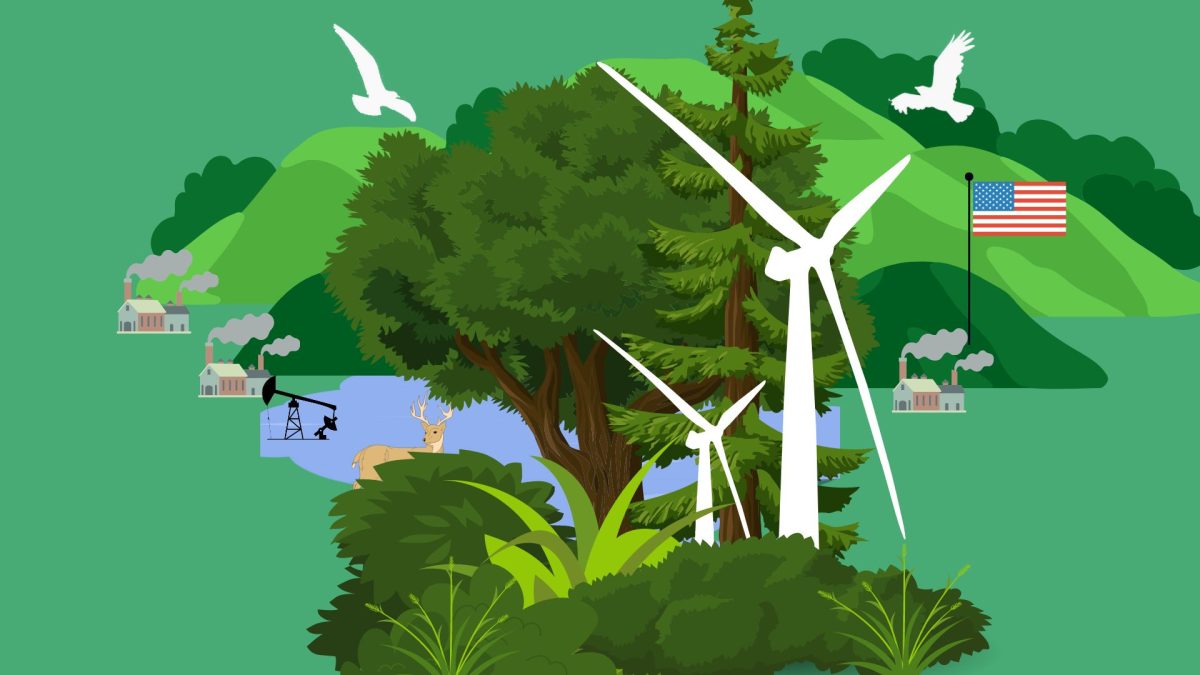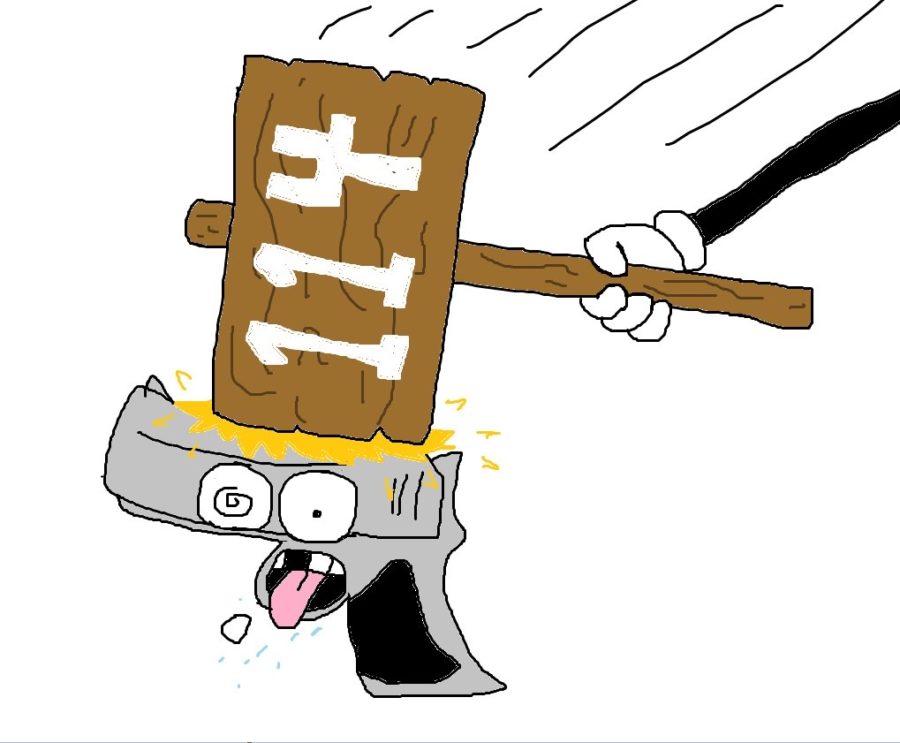A sustainable choice: Evading ‘fast fashion’ in support of our planet
Being a sustainable consumer is a difficult position to take on in the world of ‘fast fashion,’ and it can be easy to be performative and not up front about your shopping habits.
When discussing climate change, often the fashion market’s severe impact on the planet goes unmentioned. Fashion is one of the foremost polluting industries in the world. We often forget this because the materials with the most impact aren’t necessarily fabrics, but water, energy, and chemicals. According to the Textile Exchange’s guide to organic cotton, producing the average pair of jeans takes around 9,000 gallons of water. The guide also says using organic cotton saves around 40.9 million kilograms of chemical fertilizers. These resources are used the most in the manufacturing of the average garment.
When investing money into your clothes, not only is it important to factor in what is wearable and appropriate for your lifestyle, but also how your purchase is affecting the world. Climate change is a real issue, and shopping with brands that are actively trying to make the change in the fashion industry for a standard sustainability framework can make a difference. From growing fibers for textiles to the transportation of products and materials, almost everything that goes into the creation of your T-shirt is contributing to the current global climate crisis.
What can you do as a consumer?
As consumers, we cannot control what brands do to make their products so cheap, and if it is sustainable or not. We can only do our best research, and learn more about these brands we normally would consider our go-to shopping places. Take Urban Outfitters, for example, a brand extremely popular with teenagers currently. They advertise their Urban Renewal in-house brand as sustainable because it is made from deadstock and recycled materials, but it’s just “one of a kind’ overpriced thrift store items and products made based on whatever’s trendy and made to look “vintage.” By claiming to have a sustainable brand, Urban Outfitters is utilizing a marketing strategy known as “greenwashing.”
Brands use this marketing strategy to make themselves look more ethical, using vague statements about mass production and carbon emissions to detract from their lack of a sustainability contract. Though hard to do when you are just trying to buy some new clothes, thinking about what you are supporting when you shop at a store is very important. If you cannot figure out whether or not a brand is sustainable, the website Good On You has ratings of thousands of brands’ sustainability and ethics reports.
Where should you shop?

There are many ethical options out there, however, the vast majority of them have yet to hit the mainstream media. Reformation, House of Sunny, and Paloma Wool are all brands on the rise because of their trendiness and strong reports of sustainability.
House of Sunny in particular has found its place on the social media feeds of many fashion influencers. This London-based brand utilizes vegan leather for their popular Icon purses, but they acknowledge the potentially negative environmental effects vegan leather may have. From House of Sunny’s ‘Sustainable Sector’ statement, the brand says, ”Along with making a conscious effort concerning animal welfare, animal agriculture impacts global Green House Gas and emission. We acknowledge that the synthetic alternatives are not without concern, however, our decision to avoid leather allows us to have a lower environmental impact than those that do use animal products.” This is the perfect example of a brand that is honest about how ethical they are.
Though it is awesome to be able to support brands committed to sustainable business practices, it is not always the most convenient option. The overall most sustainable (and affordable) option is simply less consumption. Not buying clothes frequently means you are just using the clothes you already own or maybe receiving hand-me-downs from a friend or family member. If you are longing to shop, secondhand and vintage clothing stores are likely the second most sustainable option.
Though some may argue that shopping at thrift stores is gentrification, shopping at secondhand and vintage stores specifically in your local community is not disproportionately harming the people who need the lower prices.
Due to shopping at thrift stores becoming a trend, multiple places like Goodwill and the Salvation Army have raised their prices in recent years. People who need winter coats, shoes, or a school uniform might only be able to get those things at thrift stores, and I believe that it is important to avoid shopping at places that might be someone’s only access to an item.
By finding an alternative to supporting fast fashion, you are contributing less to the high rates American consumers dispose of their items. Vintage stores are a great place to find unique pieces that no one else will have. At vintage stores, clothes are sold as a luxury and collectible item, whereas at thrift stores, low-priced clothes are a necessity to those in need. Being able to shop at a vintage store is a privilege, and by choosing to shop secondhand you are boycotting fast fashion and making sure places like Goodwill and other thrift stores are accessible to people who need them.
No one business or consumer is 100% ethical. Brands continue to “greenwash” their products and business practices with vague statements about mass production and carbon emissions, but by taking the steps to a more sustainable lifestyle you are making a positive change for yourself and the planet.
Your donation will support the student journalists of West Linn High School. Your contribution will allow us to continue to produce quality content by purchasing equipment, software, and continuing to host our website on School Newspapers Online (SNO).

When she's not writing for wlhsNOW.com and the Amplifier, Karina Rower, senior, enjoys working to promote diversity with Affinity Club and volunteering...





![Reaching out. Christopher Lesh, student at Central Catholic High School, serves ice cream during the event on March 2, 2025, at the Portland waterfront. Central Catholic was just one of the schools that sent student volunteers out to cook, prepare, dish, and serve food. Interact club’s co-president Rachel Gerber, junior, plated the food during the event. “I like how direct the contact is,” Gerber said. “You’re there [and] you’re just doing something good. It’s simple, it’s easy, you can feel good about it.”](https://wlhsnow.com/wp-content/uploads/2025/03/interact-1-edited-1200x744.jpg)























































![At the bottom of the third inning, the Lions are still scoreless. Rowe stands at home plate, preparing to bat, while Vandenbrink stands off to the side as the next batter up. Despite having the bases loaded, the team was unable to score any runs. “It’s just the beginning of the season. We’re just going to be playing out best by June, [and] that’s where champions are,” Rowe said.](https://wlhsnow.com/wp-content/uploads/2024/03/IMG_3077-1200x900.jpg)
























































